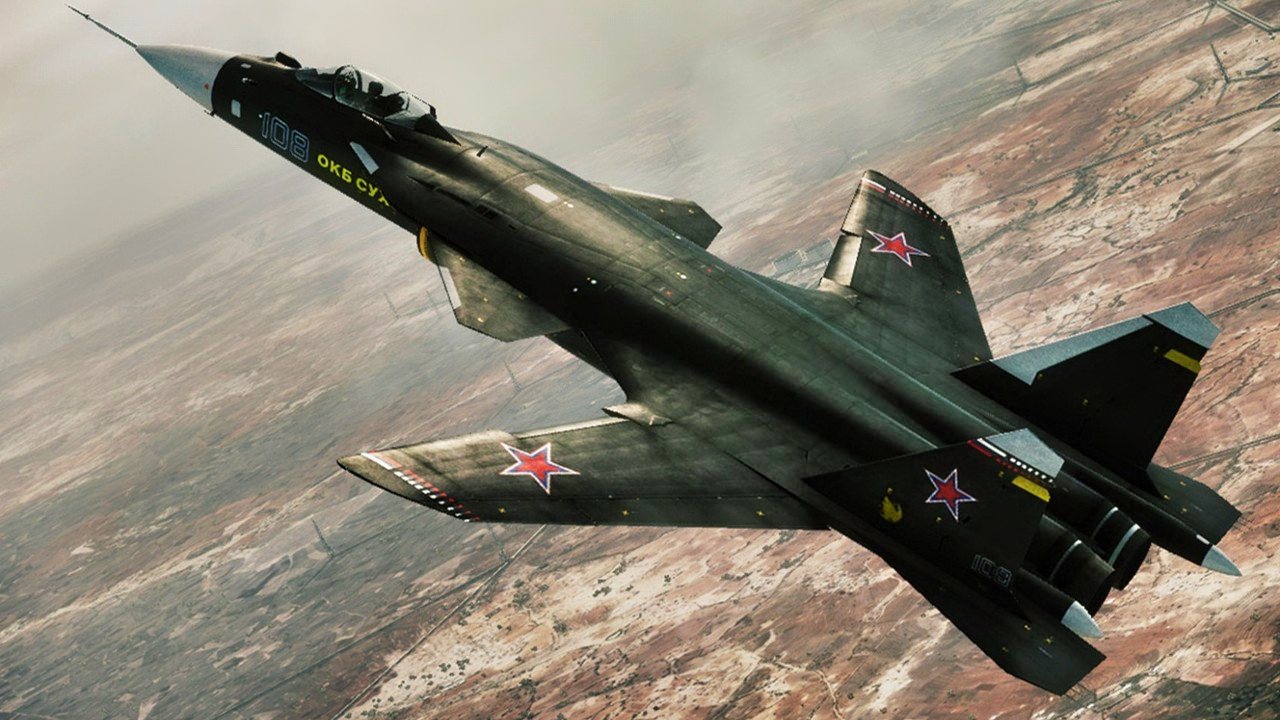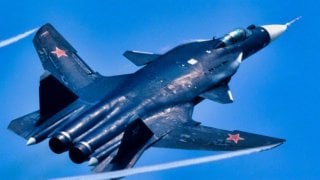Russia's Su-47 Berkut Fighter Had 'Backwards' Wings for a Reason
The Su-47 Berkut, developed in post-Soviet Russia during the 1990s, showcased forward-swept wings and was an attempt at a stealth fighter, though experts debate its stealth capabilities. Notably featuring a design based on the Su-27, the Su-47 was renowned for its maneuverability and speed due to its unique wing structure.
Summary: The Su-47 Berkut, developed in post-Soviet Russia during the 1990s, showcased forward-swept wings and was an attempt at a stealth fighter, though experts debate its stealth capabilities. Notably featuring a design based on the Su-27, the Su-47 was renowned for its maneuverability and speed due to its unique wing structure.
-However, the lightweight composite materials used made the aircraft prone to frequent maintenance issues, especially with the wings. Despite its technological advances, the Su-47 never progressed beyond a demonstrator model due to high costs and limited resources.
-The lessons learned from this aircraft influenced later Russian models like the Su-35 and Su-57, demonstrating Russia's enduring capability in aerospace technology even during challenging times.
Su-47 Berkut: The Story of Russia's Forward-Swept Wing Fighter from the 1990s
Back in the bleak chaos of post-Soviet Russia in the 1990s, the Russian Air Force famously flew a warplane with backward wings.
Billed as Sukhoi’s great attempt to build a Russian stealth warplane, the Su-47 Berkut was a unique-looking bird that was developed at a time when the world assumed the Russians no longer had it in them to execute complex, expensive projects.
As an aside, most experts do not believe that the Su-47 was, in fact, a stealth plane. Some think it might have been coated with Radar Absorbent Materials.
Problems with the Su-47
The Su-47 was a remarkable plane with a range of 2,100 miles and a top cruising speed of Mach 2.21, but the bird really stood out for its forward-swept wings. Requiring highly sophisticated manufacturing techniques and expensive materials, they required more strength than wings built in a normal configuration, because forward-swept wings tend to pull upward during flight.
Sadly, since the plane was built for maneuverability and stealth, the Russians built it out of very light composite materials, with the effect that the wings constantly cracked from all the wear and tear. While this was not catastrophic, the level of repairs needed made the plane highly expensive to maintain. And in the 1990s, money was one of the many things that Russia lacked.
Aside from the forward-swept wings, the Su-47 was basically a converted Su-27. Its vertical stabilizers and landing gear, for example, were borrowed from the older, more conventional Su-27 warplane. But the forward-swept wings made the Su-47 a better dogfighter – the plane was faster and more maneuverable than others.
Despite its popularity at European airshows in the 1990s, the Russians never armed the bird. It remained a high-concept plane.
Russian Intentions and Dreams for the Su-47
The Su-47 was conceived in the 1980s, when the Soviet Union was in its final agonies. Moscow had gotten word that the U.S. Air Force was developing a stealthy, fifth-generation warplane – the F-22 – and they naturally wanted to counter with an advanced fighter of their own. Russian designers envisioned this plane taking the Soviet Air Force into the next century. They designed the bird to be able to land and take off on shorter runways, making it a highly versatile warplane.

The plane was another great concept that the Russians just couldn’t work out. The exotic bird has since faded into history – only one demonstrator was built, and it is no longer maintained today. Still, the Su-47 served its purpose as a demonstrator. The lessons learned from it were applied to the Su-35 and the Su-57.
Bottom line: Russia is not some backward nation. Even at its lowest point, the post-Soviet 1990s, the Russian state was still producing impressive, technologically advanced warplanes whose impact is still being felt today.
About the Author
Brandon J. Weichert, a National Interest national security analyst, is a former Congressional staffer and geopolitical analyst who is a contributor at The Washington Times, the Asia Times, and The-Pipeline. He is the author of Winning Space: How America Remains a Superpower, Biohacked: China’s Race to Control Life, and The Shadow War: Iran’s Quest for Supremacy. His next book, A Disaster of Our Own Making: How the West Lost Ukraine, is due October 22 from Encounter Books. Weichert can be followed via Twitter @WeTheBrandon.


